Hello, winter and the holiday season. Many Great Lakes gardeners are almost too busy this month with holiday activities to spend time gardening. But the winter garden provides inspiration for holiday decorating, and while gardening outdoors has generally ceased, there are some important tasks to perform according to the weather. Plus, once the snow blankets the ground, we can take gardening indoors for our horticultural fix.
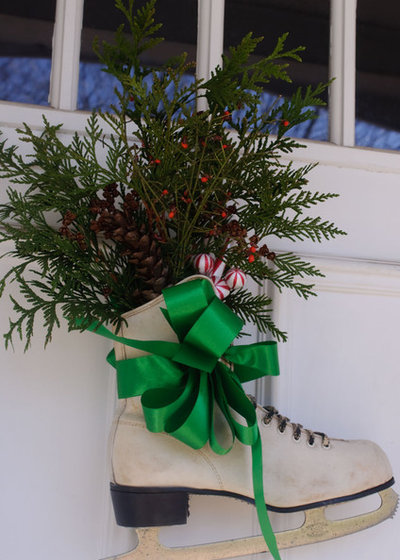
Barbara Pintozzi
Instead of buying a front-door wreath, fill a vintage ice skate with greenery from the garden (here
arborvitae, Thuja occidentalis)
, pinecones and bright berries (here
wahoo, Euonymus americanus)
or rose hips, and tie it with a bow to hang on the front door. A small round of floral foam stuck in the neck of the boot supports the trimmings. Spray conifer greenery with an antidessicant to keep it fresh and add small ornaments or candy canes to complete the look.
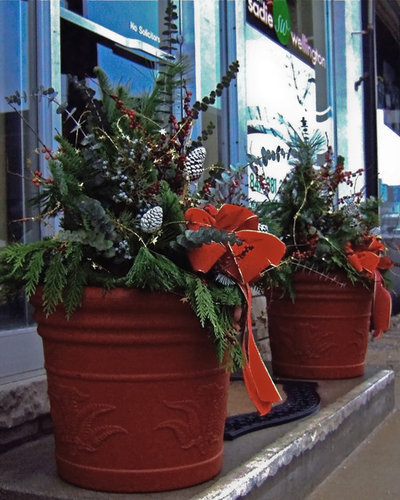
Barbara Pintozzi
Decorate outside for the holidays. Welcome guests with a front entry flanked by containers filled with evergreens and dried cuttings from the garden. Supplement those gleanings with purchased greenery, such as
eucalyptus, put everything in a festive pot and finish with a bow. Painting or gluing glitter on pinecones makes them stand out.
5 Container Gardens for the Holidays and Beyond
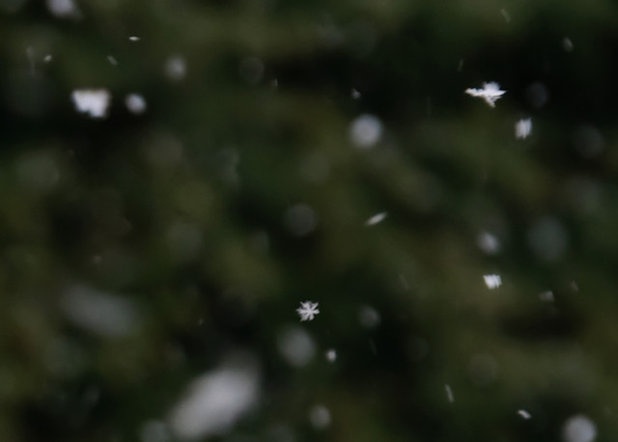
Barbara Pintozzi
Winter comes to the garden. December 1 marks the start of meteorological winter. Here come those flakes. They look so pretty and harmless as they first float down, but beware when they start to pile up.
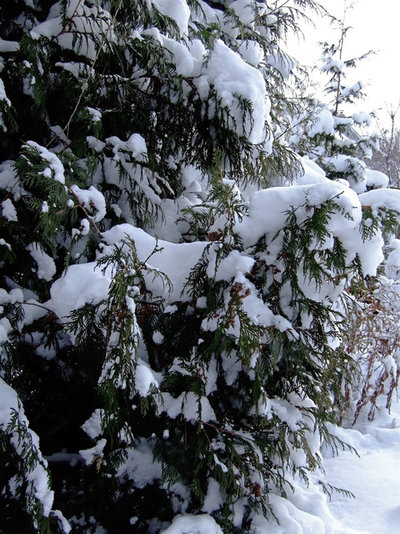
Barbara Pintozzi
Heavy snow accumulations can damage woody plants by bending them down or breaking limbs. Remove fresh, heavy snow from evergreens, such as this arborvitae
(
Thuja occidentalis 'Elegantissima'), by lifting and gently shaking a broom underneath each branch. Batting the snow off from the top could cause more damage than leaving it.
Do not attempt to dislodge snow if it has frozen to the branches. Instead, prop the branches up from underneath.
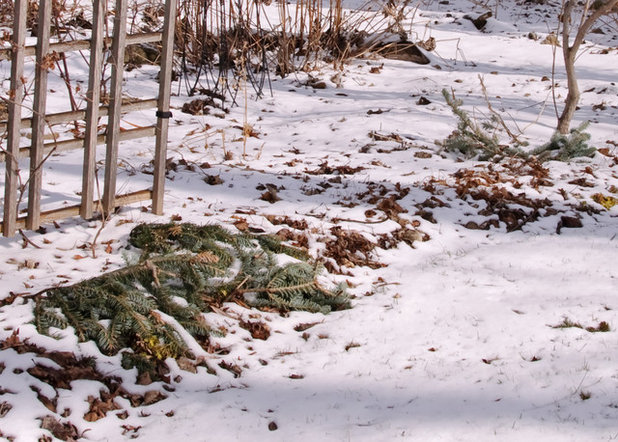
Barbara Pintozzi
Snow can actually help the garden, as it is the best insulator against the cold. Without adequate snow cover, plants are vulnerable to the frost-heave cycle, which can expose roots, resulting in plant death.
To hedge your bets, mulch the garden after the ground has frozen, to keep it frozen. Shredded leaves are fine for most of the garden, tucked in around plants but never over the crown.
Perennials with evergreen basal foliage, such as
peach-leafed bellflower (
Campanula persifolia 'Blue-Eyed Blonde', shown),
cardinal flowers (
Lobelia species and hybrids) and
coral bells (Heuchera) need an airier mulch, or they will be smothered and rot. If pine straw is unavailable, use old Christmas tree branches to mulch them.
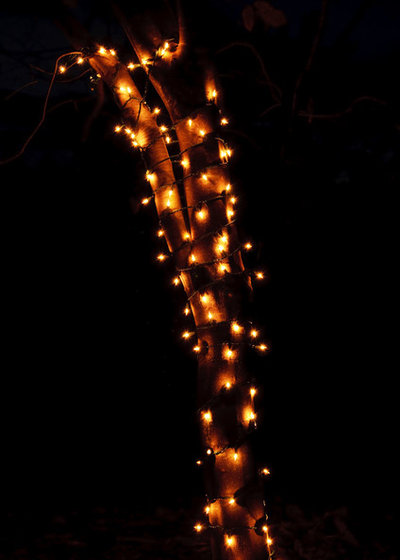
Barbara Pintozzi
Consider plants' needs when decorating outdoors. The delicate branches and forming flower buds of some trees can get broken when holiday lights are strung or removed. Instead of draping the branches, wrap the trunks of easily damaged trees such as
yellowwood (
Cladrastis kentukea, shown) and
magnolia for a modern, festive look.
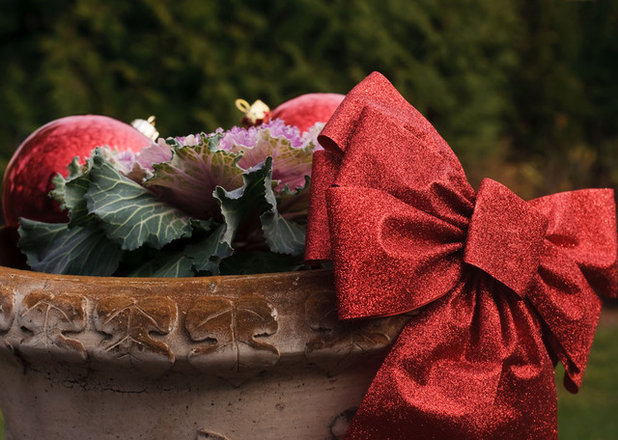
Barbara Pintozzi
Similarly, it's better to put outdoor nonbreakable ornaments into containers instead of hanging them from delicate branches. The ball ornaments here echo the shape of cold-tolerant
ornamental cabbage and
kale (Brassica oleracea).
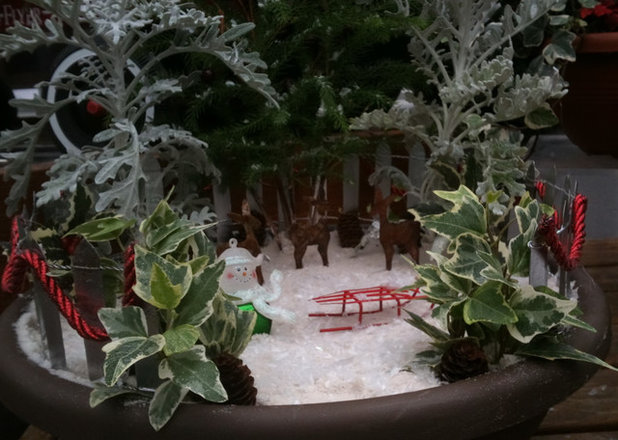
Barbara Pintozzi
Turn to indoor gardening. Put your creativity to work by making an indoor holiday fairy garden. While small plants, such as
variegated ivy (
Hedera helix, shown), are normally used in fairy gardens, larger plants, like this
dusty miller (Artemisia stelleriana) and
Norfolk pine (Araucaria heterophylla) towering over the scene give the planting depth.
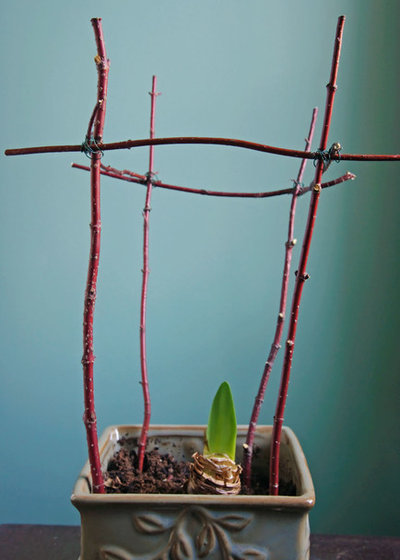
Barbara Pintozzi
Amaryllis (Hippeastrum sp) blooms easily indoors in winter, but the huge, top-heavy flowers often topple over. Provide support to keep the blooms upright. Supports can be made from bamboo or hardwood cuttings from the garden, such as these
red dogwood (Cornus alba) stems. Connect with raffia, ribbon or floral wire, depending on the look you wish to achieve. This type of support can also be used for floppy
paperwhites (Narcissus tazetta).
Water pots of bulbs for forcing weekly. Provide adequate moisture for indoor plants and
poinsettias (Euphorbia pulcherrima), which can be challenging with dry indoor air. Too much water can be as deadly as too little, so check the soil moisture before watering rather than watering on a schedule. Do not allow plants to stand in excess water in a saucer. Place them in the brightest location in the house, but away from drafts and heat vents.
Happy holidays!





